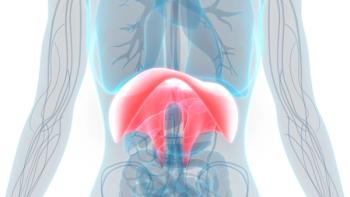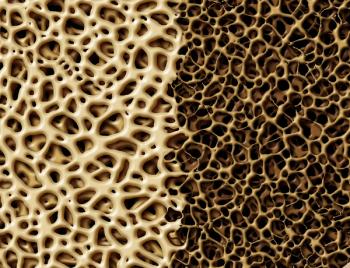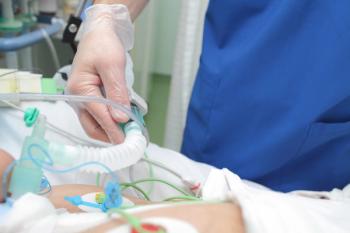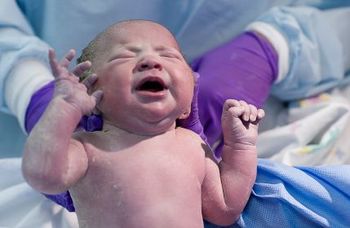
After 1 year of treatment with risdiplam, 81% of the 26-infant cohort was able to sit independently for 30 seconds, a milestone not typically reached in spinal muscular atrophy (SMA).

After 1 year of treatment with risdiplam, 81% of the 26-infant cohort was able to sit independently for 30 seconds, a milestone not typically reached in spinal muscular atrophy (SMA).

Researchers have developed a new line method (NLM) that showcased benefits for genetic screening in spinal muscular atrophy (SMA).

In this prospective study, respiratory monitoring of patients with spinal muscular atrophy (SMA) benefited from the use of diaphragm ultrasound imaging.

In a multidisciplinary follow-up study, researchers analyzed bone health decline and the effects of nusinersen in patients with spinal muscular atrophy (SMA) types 2 and 3.

Following the course of lung function in treatment-naïve patients, researchers found that lung function decline does not accelerate prior to mechanical ventilation.

The Chinese report details the case of a 6-year-old female patient with type 1 SMA who was successfully weaned off prolonged invasive ventilation after beginning treatment with nusinersen.

The researchers used Paraphase on more than 400 samples of spinal muscular atrophy (SMA) comprising 5 ethnicities.

Researchers of the multicenter study looked at the effect of nusinersen among 48 patients with spinal muscular atrophy (SMA) from 2 Italian hospitals, finding more active immune systems among the patients with SMA1, the most severe form of the disorder.

Investigators note that although the overall cost for implementing next-generation sequencing (NGS) testing would be more than implementing current polymerase chain reaction (PCR)–based testing, the assay may be more cost effective overall because it screens for multiple conditions.

The data showed that most doses of nusinersen were received on time while also underscoring the importance of being meticulous with the methodological approaches used with real-world databases for evaluating treatment patterns.

Data from 2 prospective studies showed correlations between impaired patient health-related quality of life (HRQOL) and disease severity, as well as correlations between the health of caregivers and their HRQOL and caregiver burden.

A new study aimed to assess the quality and reliability of videos uploaded to YouTube that provide information around spinal muscular atrophy (SMA).

As of September 2022, all but 2 states had implemented newborn screening programs for spinal muscular atrophy (SMA), accounting for 98% of births in the United States.

Patients with spinal muscular atrophy (SMA) could have improved monitoring and assessment of their disease through the utilization of patient-reported outcome measures.

A study found that screening for spinal muscular atrophy (SMA) in newborns paired with early access to disease-modifying therapies was effective in alleviating the burden and comorbidities of the disease.

Qualitative interviews conducted with caregivers of children with spinal muscular atrophy (SMA) found that the symptoms with the greatest effect on disease burden were not always the most prevalent symptoms in patients.

Pediatric and adult patients with a diagnosis of spinal muscular atrophy (SMA) benefitted from nusinersen treatment in that they were able to prolong their walking time.

The diagnosis and treatment of a rare disease like spinal muscular atrophy (SMA) would benefit greatly from using implementation science to reduce the variation that exists in screening and therapy, according to researchers.

Patients who receive a diagnosis of spinal muscular atrophy (SMA) require an empathetic approach from their primary care physician when receiving the diagnosis and evaluating options, according to recent study findings.

New study findings show that internalized problems such as anxiety and depression were found at higher levels in children and infants who had a diagnosis of spinal muscular atrophy (SMA).

The findings, which the researchers say highlight the importance of early diagnosis and initiation of treatment, come amid efforts to determine efficacy trends among the several treatment options for the condition.

The most-read spinal muscular atrophy (SMA) articles of the year touched on novel SMN1 gene detection, treatment advances, and the diagnostic difficulty encountered by some adult patients with SMA.

The findings, say the researchers, confirm that repeated intrathecal injections of the gene-targeting therapy are safe, adding to the limited data on the long-term effect and safety of the treatment approach in neurological diseases.

Drawing on findings from other countries, including the United States, the group is highlighting the need for a newborn screening program to mitigate these current barriers.

The new report is based on real-world data from a patient registry and shows some patients even regain motor function under treatment with nusinersen for spinal muscular atrophy (SMA).

259 Prospect Plains Rd, Bldg H
Cranbury, NJ 08512
© 2025 MJH Life Sciences®
All rights reserved.
